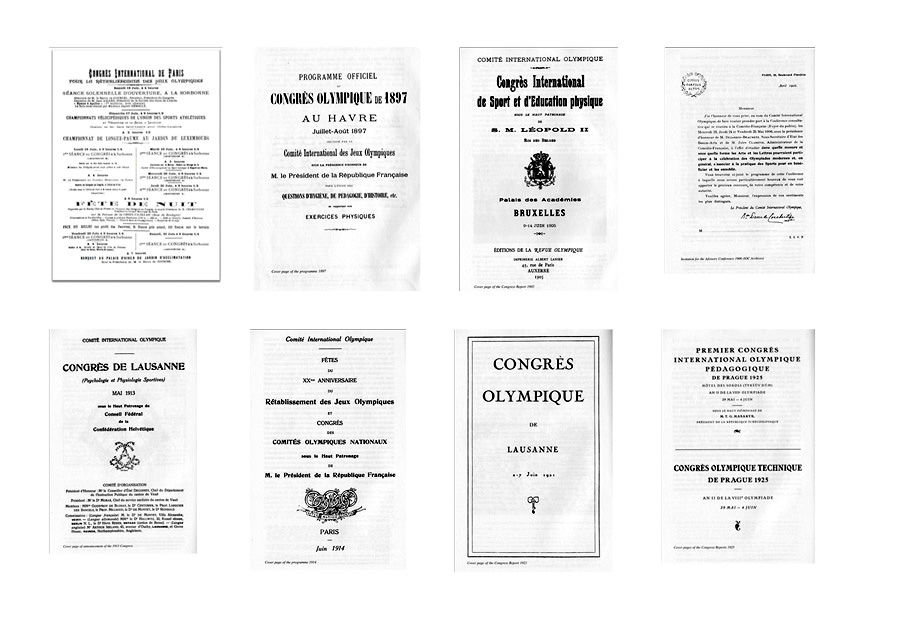Olympic Congresses
Stephan Wassong
Before Pierre de Coubertin succeeded in re-establishing the Olympic Games, he was already attending and organising national and international congresses to analyse and promote the value of sport as an educational tool. For example, the International Congress on Physical Education was held on the occasion of the 1889 Paris World Fair. Coubertin was one of the co-organisers of this congress, at which he presented the results of a survey on the recognition of physical exercise in educational settings in Great Britain, the USA and Australia.
Today, Olympic Congresses are an important pillar of the Olympic Movement. It is not mandatory for the International Olympic Committee (IOC) to hold an Olympic Congress on a regular basis – nothing is mentioned about this in the Olympic Charter. The fact that the IOC has not removed the topic of Olympic Congresses from its agenda shows that it still views a gathering of all the representatives of the so-called Olympic family as an important platform for discussion on the profile and sustainable development of the Olympic Movement. Since 1894 – the year of the foundation of the Olympic Movement – 13 Olympic Congresses have been organised to date: Paris 1894, Le Havre 1897, Brussels 1905, Paris 1906, Lausanne 1913, Paris 1914, Lausanne 1921, Prague 1925, Berlin 1930, Varna 1973, Baden-Baden 1981, Paris 1994 and Copenhagen 2009. The first eight congresses were organised by Coubertin. He invented the tradition of the congress in the Olympic Movement. But why?
Coubertin believed that Olympic Congresses should be a platform to promote the leitmotifs of the concept of Olympism. Coubertin organised them to demonstrate that the Olympic Movement is not only about practising sport but also a multidimensional recognition of sport as a tool to support social development across the globe. Olympic Congresses should unite modern sport with science, education and culture. This was discussed at the congresses that Coubertin organised and it contributed much to raising the public profile of the then young Olympic Movement. Norbert Müller analysed the Olympic Congresses in detail in his book entitled One Hundred Years of Olympic Congresses 1894-1994,and evaluated the processes of continuity and transformation in the different eras in which the Olympic Congresses were held.
The Olympic Congress in Prague which was held from 29th May to 4th June 1925 was Coubertin’s last one; he had already announced his resignation as the president of the IOC and had made it public at the 21st session of the IOC which preceded the congress. In Prague, a double congress took place and comprised a Technical Olympic Congressand a First International Olympic Pedagogical Congress. The latter was to honour Coubertin. It therefore dealt with sport-related educational topics, which were addressed in nine fields of discussion: excess of sporting events, negative developments in boxing, participation of young people in competitions, participation of women in sport, revival of the ancient gymnasium, fair play and chivalrous spirit, sport at universities, sport programmes as a possible form of healthcare, and sport for all. Almost all of these topics were of relevance not only in the 1920s but also today. Evidence of this can be seen in the discussions at the Olympic Congress in Copenhagen in 2009 as well as those at the Olympism in Action Forumheld on the occasion of the 2018 Youth Olympic Games in Buenos Aires.


